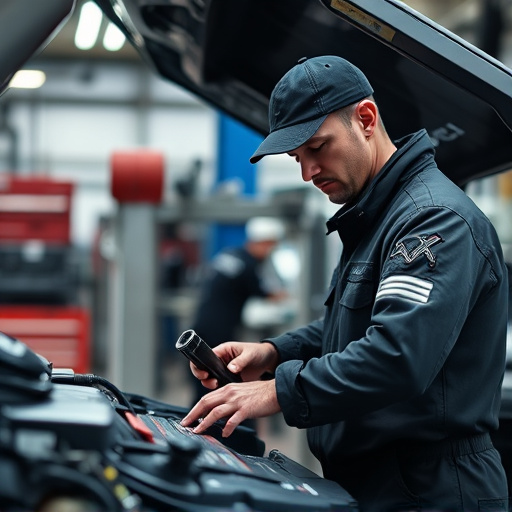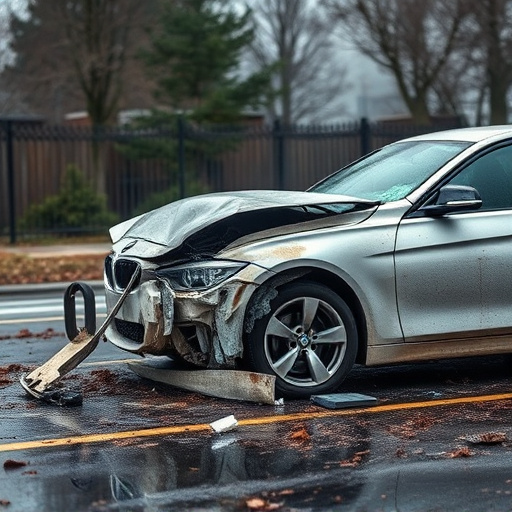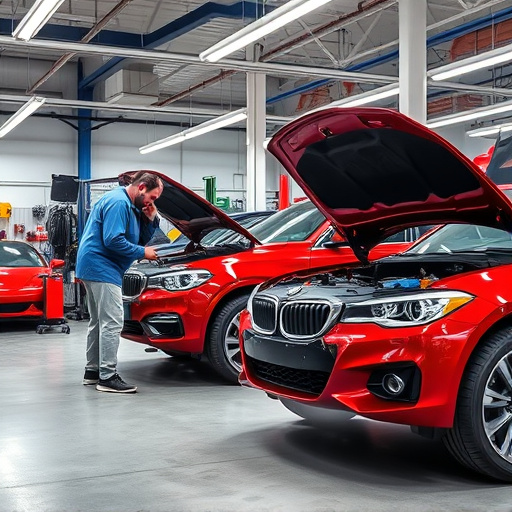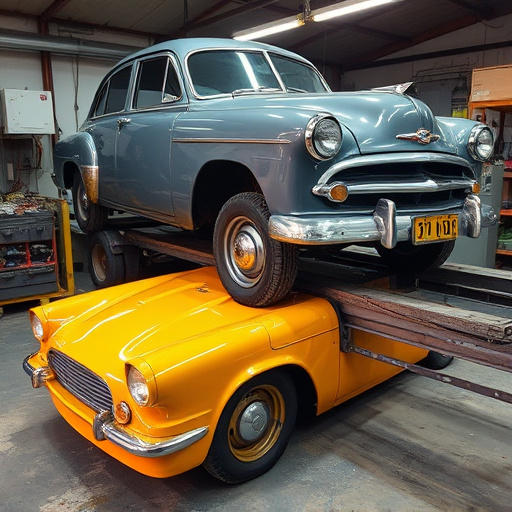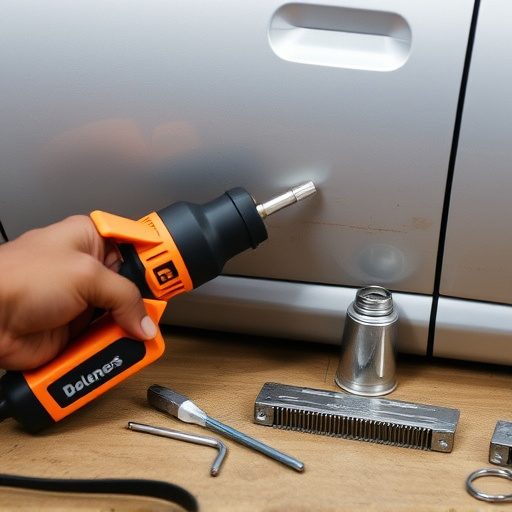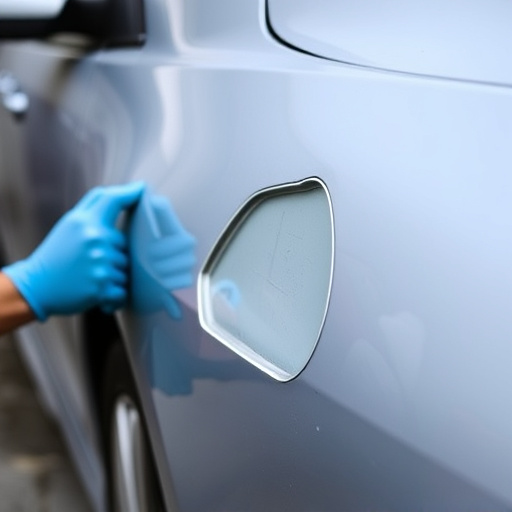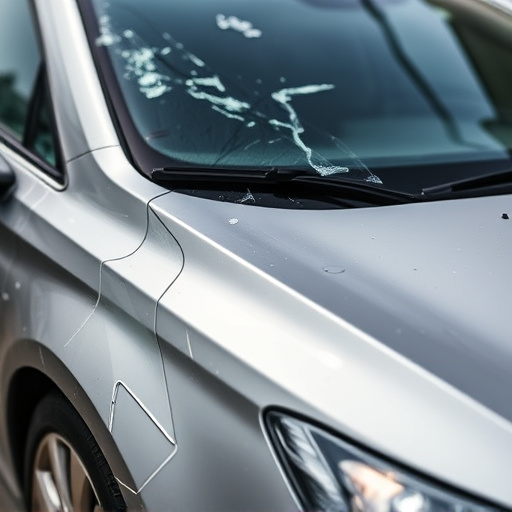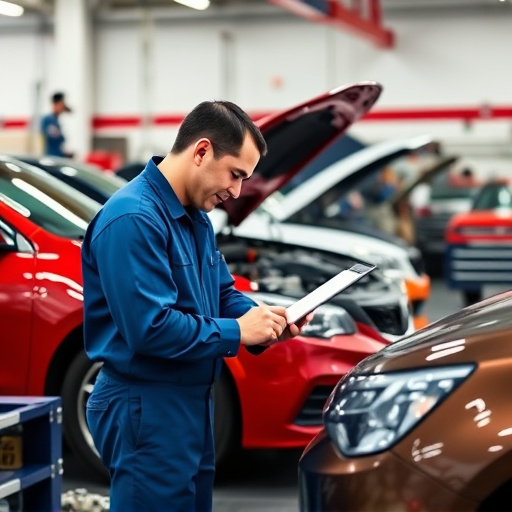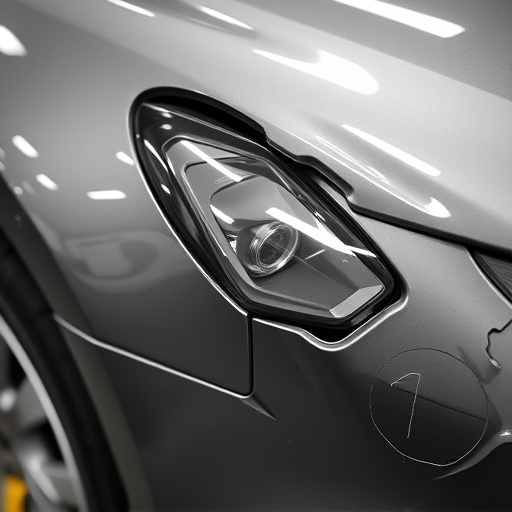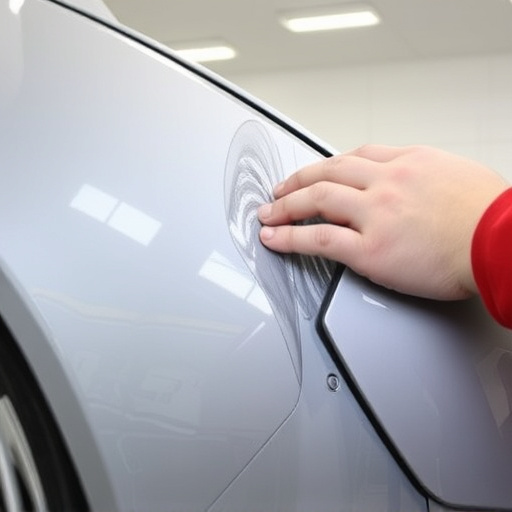Mercedes aluminum repair is a specialized field due to the brand's use of aluminum body structures since the 1990s, offering weight reduction, improved safety, and fuel efficiency. Intricate designs demand precise repair or replacement of body panels, maintaining structural integrity and safety features like airbags. Professional services ensure optimal safety post-accidents, combining modern technology and skilled craftsmanship for accurate measurements, replacements, and complex component repairs while preserving the vehicle's original aesthetic and design.
Mercedes aluminum repair is a specialized art, especially when addressing the intricate body structure and safety systems of modern Mercedes vehicles. This article delves into the world of Mercedes aluminum repair, focusing on its unique body construction and airbag deployment mechanisms. By understanding these aspects, technicians can ensure accurate repairs and maintain the vehicle’s structural integrity and safety standards. We’ll explore effective techniques for restoring damaged aluminum, highlighting best practices for efficient and reliable Mercedes aluminum repair.
- Understanding Mercedes Aluminum Body Structure
- Airbag Deployment Mechanics and Safety Protocols
- Repair Techniques for Efficient Restoration
Understanding Mercedes Aluminum Body Structure

Mercedes vehicles are renowned for their sleek design and innovative engineering, and a significant part of this is their aluminum body structure. Understanding this unique aspect is crucial when it comes to Mercedes aluminum repair. The brand has been utilizing aluminum extensively since the 1990s, recognizing its benefits in terms of weight reduction, improved safety, and enhanced fuel efficiency. This lightweight metal plays a vital role in achieving Mercedes-Benz’s signature dynamic handling and overall vehicle performance.
The body panels of a Mercedes aluminum car are designed with precision engineering, often featuring complex shapes and intricate joining methods. When repairing or replacing these parts, it is essential to match the original specifications precisely. Auto repair shops specializing in Mercedes services have the expertise and tools to handle such delicate tasks, ensuring that the vehicle retains its structural integrity and safety features, particularly when dealing with critical components like the body’s deployment zones for airbags.
Airbag Deployment Mechanics and Safety Protocols

Airbags play a pivotal role in enhancing vehicle safety during accidents. When a collision triggers the airbag deployment zone, it sets off a complex series of events. A sensitive sensor detects the impact and sends a signal to the control module, which then activates the airbag. This rapid response allows for a critical few milliseconds to protect occupants from severe injuries. The airbag inflates almost instantly, creating a protective barrier between the driver or passenger and the hard interior parts of the vehicle.
Safety protocols dictate that Mercedes aluminum repair should be considered when an airbag has deployed, especially in modern cars with advanced safety systems. In the event of a fender bender or minor collision, even if there are no visible dents, it’s essential to have a professional assess the car bodywork services required. This is crucial as damaged components, including aluminum panels, can compromise the structural integrity and airbag deployment zones of a vehicle. Prompt vehicle dent repair ensures that any potential hazards are eliminated, maintaining optimal safety for future trips.
Repair Techniques for Efficient Restoration

When it comes to Mercedes aluminum repair, efficient restoration requires a blend of advanced techniques and meticulous precision. Modern methods such as computer-aided design (CAD) and 3D printing allow for precise measurements and exact replacement parts, ensuring that every detail of the original design is respected. This high-tech approach is particularly crucial for luxury vehicles like Mercedes, where aesthetics and safety are paramount.
For optimal results in Mercedes aluminum repair, including complex components like airbags, specialized equipment and trained technicians are essential. Frame straightening techniques play a significant role in realigning warped metal without compromising structural integrity. Similarly, fender repair methods have evolved to include both traditional handwork and state-of-the-art machine pressings, offering versatility for various damage scenarios. Skilled automotive body work specialists can effectively combine these techniques, ensuring not just functional restoration but also the preservation of the vehicle’s elegant and distinctive design.
When addressing Mercedes aluminum repair, understanding the unique body structure and prioritizing airbag deployment safety protocols are paramount. By mastering these aspects, professionals can ensure efficient restoration that maintains both structural integrity and passenger protection. This knowledge is crucial for delivering top-tier services tailored to the intricate needs of Mercedes vehicles, ultimately enhancing customer satisfaction and ensuring on-road safety.
